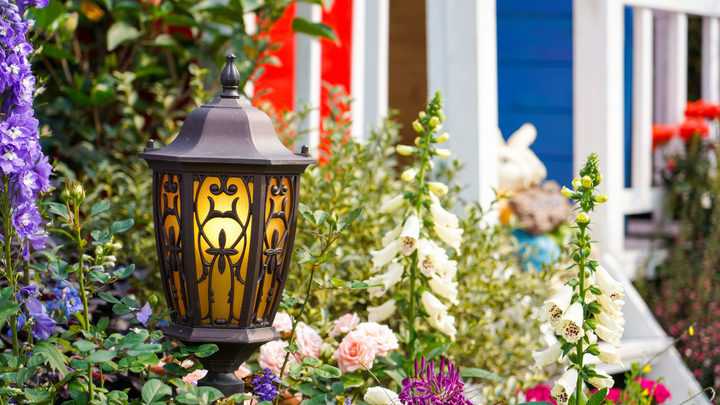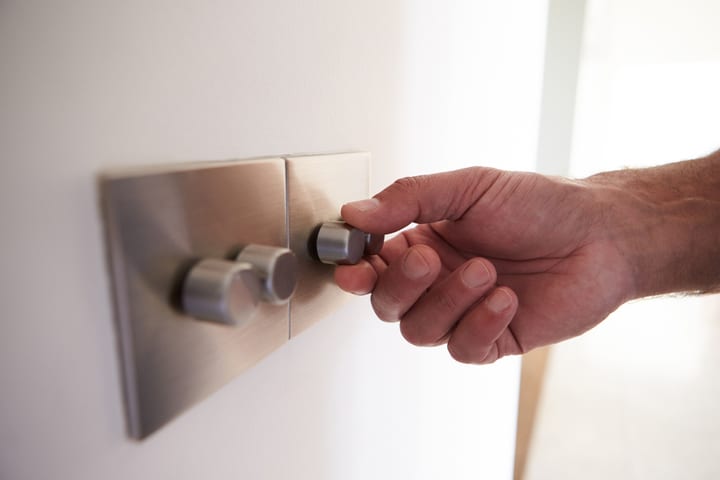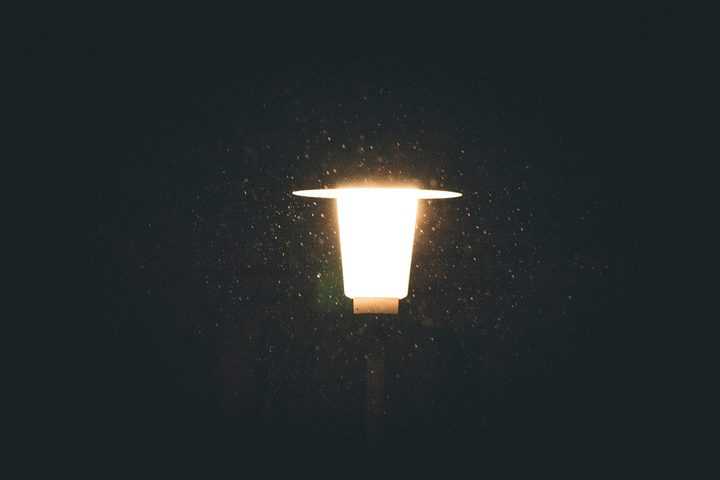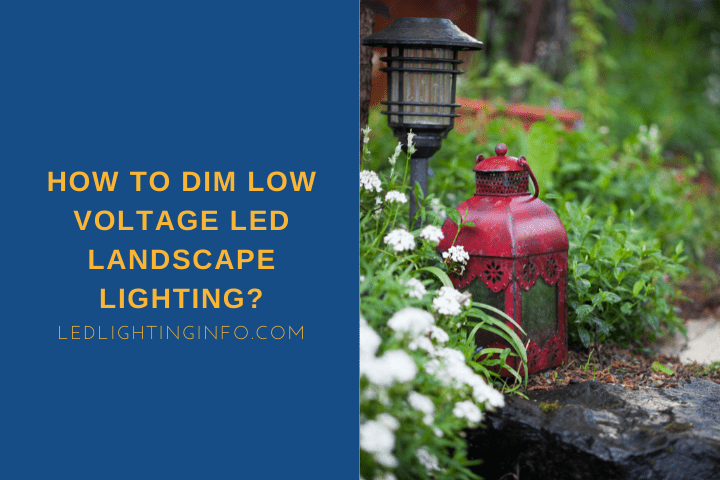No matter how much planning you put into your landscape lighting, there’s no way of definitively knowing how it will look until you’ve got the whole setup in place and you’ve switched it on.
That’s the thing with light – it’s hard to simulate, and it’s hard to imagine.
It means that, even if you’ve planned your setup to perfection, it might still look a little too bright once you flick the switch for the first time.
Or maybe that was planned – perhaps you want your garden to have some flexibility with how bright it is, and you want the option to have it brighter on some days and dimmer on others?
To dim landscape lighting, you ideally need a specialty transformer that allows dimming, and your lights need to be dimmable too. You can use a 12V dimmer with some transformers. Not all LEDs can be dimmed, and non-dimmable bulbs won’t work properly with a dimmable transformer.
In this article I’m going to cover:
- What you can do if your landscape lights are too bright
- Whether landscape lights can be dimmed
- The type of transformer you’ll need
- Dimming lights with a traditional dimmer
What To Do If Landscape Lights Are Too Bright?

There are a handful of options available to you if the landscape lights you’ve chosen are too bright that doesn’t involve getting everything set up with a proper dimmer.
They don’t give you total flexibility, but they could save you money and get the result you’re looking for.
Firstly, if the problem is that the lights are shining too bright onto a wall or feature, and it’s looking harsh, see if you’ve got any flexibility to just move them a few inches further away without completely digging up the cabling.
If you have that option, a couple of inches can make a surprising difference to the brightness of the light when it’s facing a surface.
Your second option is to apply a gel filter (Amazon) to your lights. These filters can be used for color correction too.
However, with outdoor lighting, you’re more likely to use them to help soften the light and dim it a little. This is because the filter will absorb some light, meaningless gets through.
This is a really cheap solution.
On the other hand, it’s very time-consuming since you need to prepare each filter to size and properly secure it to the light, so the weather doesn’t remove it.
It’s also inconsistent to expect your lighting to look different around your garden.
Another option, if your chosen lights aren’t sealed, is to just swap out the bulbs for less bright ones.
Again, this is a bit time-consuming, but LED bulbs are relatively cheap.
Once you’re done you’ll have a uniform light, even if you have no control over it.
Are Landscape Lights Dimmable?

Not all landscape lights are inherently dimmable. There are two factors that determine whether you’ll be able to dim your outdoor lights:
- Are the lights dimmable?
- Is the transformer dimmable?
I’ll cover the transformer in more detail shortly, but if it’s not, then you can still dim your lights. You just need an extra component.
In terms of the lights, it’s important to note that this relates to the bulb itself, not the entire fixture.
So if you’re buying outdoor fixtures with replaceable bulbs, all you need to do is make sure you purchase dimmable LED light bulbs for the fixture.
If you’re buying sealed lights, you need to make sure that the entire light is dimmable.
When it doesn’t advertise, assume that it isn’t.
Dimmable lights have more internal components and so cost more – you would be told if it was dimmable.
Related: Do Landscape Lights Increase Home Value?
Selecting Dimmable Landscape Lighting Transformer

With the dimmable LED lights sorted, it’s time to address the transformer.
Most transformers aren’t dimmable, so if you have one already, then it’s likely you’ll need to replace it.
Dimmable landscape lighting transformers aren’t common at all – don’t expect to find one on Amazon, that’s how unusual we’re talking – and they tend to be a lot more expensive so bear that in mind.
When you’re replacing your transformer, there are a couple of things to consider.
Firstly, make sure the new transformer can cope with your lights.
It sounds simple, but it’s easy to forget while you’re shopping for dimmable options that the most crucial factor is a transformer that won’t be overloaded by your setup.
Remember that you should only be using 80% of your transformer’s capacity, so don’t buy a 200 Watt transformer if you’re using 200 Watts of lighting.
Upgrade to at least a 300 Watt option to prevent any issues with power fluctuations.
Analog dimmable transformers aren’t really an option; you’re going to be buying digital.
Therefore, you’ll be getting one that likely has WiFi controls, letting you change the dimming settings from your phone.
So you must consider the location of your transformer too. Is it in range of your WiFi?
If not, do you need a signal booster?
Using A Dimmer Switch
It’s actually possible to use a traditional dimmer switch on an outdoor system, and it should work fine.
However, it’s not an officially recommended choice for most transformers.
If you’re concerned, then you could email the customer support team for your chosen transformer and see if they think it’s safe to do so.
In theory, it should be fine, and it’s relatively simple too. You just need to wire the dimmer into the circuit after the transformer.
So, the power goes from the mains to the transformer, where it is down stepped, before then reaching the dimmer.
You must buy a 12V dimmer for this. Next, you’ll need to think about how you can safely mount and waterproof the switch.
This is a simple and much more cost-effective option than spending huge sums on a dedicated transformer.
This video from a North American landscape lighting installer explains how to add a DIY dimmer to your setup.
Final Words
Dimmable landscape lighting is nowhere near as widespread and popular as dimmable interior lights.
So the technology to do it properly – in terms of the transformer – is still relatively rare and expensive.
Despite being time-consuming, if you’re on a budget, you may be better off trying either gel filters or dimmer bulbs if you find your landscape lights are too bright.
Having said that, you can really tailor your garden setup when you do opt for a high-quality dimmable transformer.
So if you have the cash, then absolutely go for it.
Do you have any other ideas for dimming lights that I’ve not included here?

